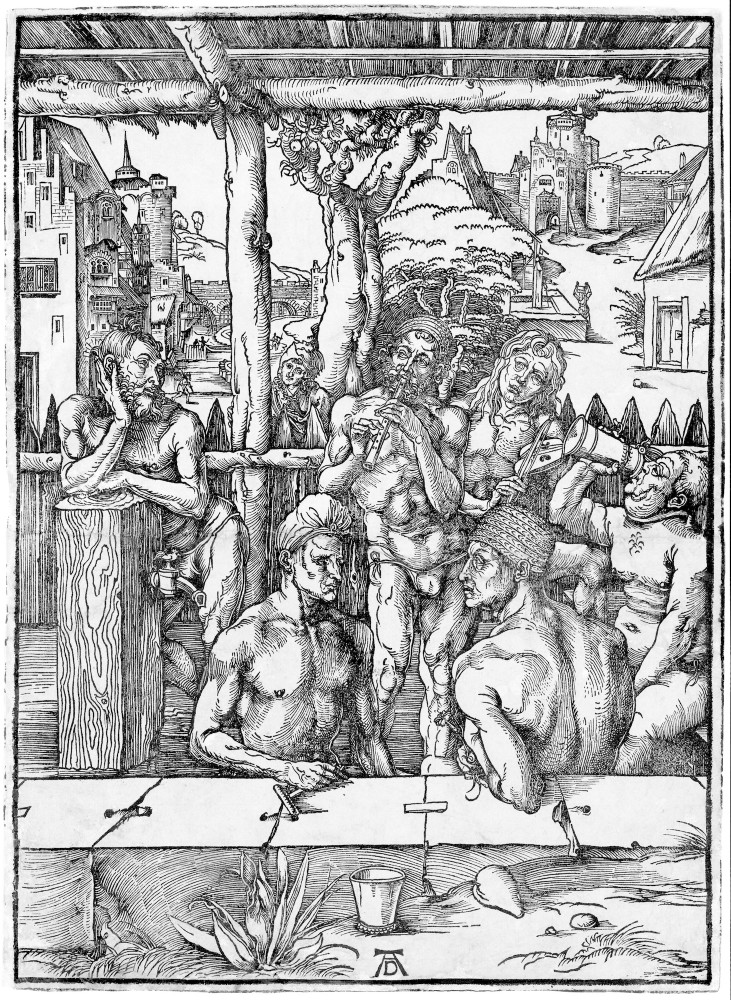Original woodcut, monogrammed in plate; Meder 266 d/f;
Splendid proof particularly well inked as indicated for the best proofs of the fourth variant; printed on a paper with "Hamburg Shield" watermark datable to the second half of the 16th century, as reported by Meder (177) and Briquet (2118).
The sheet has a horizontal crease, reinforced on the verso, as is often the case with large sheets, and two perfectly executed restorations to the lower corners, each covering an area of a few millimetres. Otherwise the conservation is excellent and the paper sound and crisp.
On the verso the SL collection stamp with the inscription 5653 not found on the Lugt.
Silography is at the origin of Albrecht Dürer's technical-artistic training. He began his apprenticeship in the workshop of Michael Wolgemut, an entrepreneur who rewrote the canons of silography and contributed to the development of German publishing. Dürer's manifold talents were noticed very early on, so much so that they triggered jealousies within the print shop, including those of Wolgemut himself, who realised the superiority of his worker and in 1489, after only three years, dismissed him. A defeat that spurred the engraver to leave Nuremberg and begin a series of journeys that would be the basis of his growth and fortune.
With The Men's Bath, Dürer offers an insight into the customs and traditions of his time. At the time it was customary for men and women to use public baths, and in the city of Nuremberg in the first half of the 16th century there were at least a dozen. The baths did not only respond to curative and sanitary needs, but were also a place of recreation and pleasure, so much so that in Dürer's silograph we see two men playing a flute and a violin respectively, while a third eagerly drinks from a mug of beer. With malice, the Master also alludes to the erotic sphere of public baths: by placing the man on the left on the fountain, he makes the cock-shaped tap coincide with his sexual organ.
An additional reference, useful for dating, concerns the timely closure of public baths in Nuremberg in 1496 in an effort to prevent the spread of syphilis (which was believed to be spread through proximity to the sick).
The work, albeit with some minor perspective errors, shows the young Dürer's creative robustness in tackling secular subjects and in using a technical means that a few years later would allow him to create the Four Horsemen of the Apocalypse, a pivotal image in the history of art.

